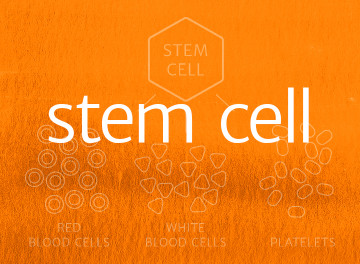You are here
Stem Cell Transplantation

Treatment type:
- Stem cell
- First line
- Fifth line
Depending on the particular type or stage of leukaemia, and many other things about the individual patient, treatment options might include an intensive procedure such as a haematopoietic stem cell transplant. There are two main types of stem cell transplants:
Stem cells from your own body (also called an autologous transplant) or Stem cells from a donor (also called an allogeneic transplant). The donor can be a family member or someone unrelated to you.
Haematopoietic Stem Cell Transplant (HSCT) is a procedure that replaces the abnormal 'leukaemic' cells with healthy cells collected from the blood or bone marrow of a related or unrelated HLA matched a healthy donor. The donated cells include not only healthy Stem Cells, but also important immune cells that help to kill the patients leukaemic cells. The donor must match the patient’s tissue type (HLA) otherwise the transplanted donor cells will be attacked by the patient’s immune system and rejected. HSCTs are particularly effective for treating certain types of acute leukaemia. However, the procedure is intensive and risky with the potential for substantial after effects.
Limitations of current stem cell treatments
A haematopoietic stem cell transplant using cells from a donor can have serious side effects including:
Infections - The transplanted stem cells need time to produce the necessary new blood cells for the body. Infections can occur due to the inevitable delay in the replenishment of the patient’s immune system with white blood cells, which leaves the patient highly vulnerable to infections for a period. Careful observation and preventative treatment with antibiotics can help to reduce infection risks.
Graft-versus-host disease (GvHD) - This complication occurs when donor blood cells attack the patient’s tissue. Symptoms include rashes, diarrhoea, blisters and fever. GvHD is a serious complication and can be life-threatening. It can be minimized by closely matching the tissue type of the donor to the patient. This is easiest to achieve if the patient has a matched sibling. Other strategies to prevent GvHD include suppressing the immune system with drugs and removing a specific type of white blood cells (lymphocytes) from the transplant. Researchers and doctors are investigating ways to improve current transplantation approaches in order to address these limitations. Another challenge is the shortage of donors and several organisations are working to increase the number of volunteers in donor registries.
Recent developments: Reduced Intensity SCT
High doses of chemotherapy agents given to leukaemia patients before a transplant destroys both leukaemic cells and healthy bone marrow cells. Newer forms of transplantation called reduced-intensity stem cell transplant (RIC-SCT) have been developed to reduce the risk. These procedures allow lower doses of chemotherapy to be used, which helps avoid extensive damage to the bone marrow. Instead, donor immune cells are transplanted with the donor haematopoietic stem cells to attack and eliminate any remaining leukaemic cells. This is called a graft-versus-leukaemia effect. This type of transplant has fewer side effects but some serious ones remain, particularly GvHD.